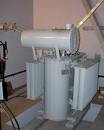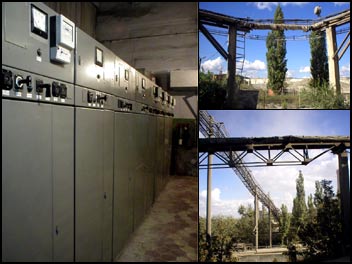Modes of neutral grounding in electrical networks 6-35 kV
The method of grounding the neutral network is a rather important feature. It defines:
-
current at the fault location and overvoltage on undamaged phases with a single-phase fault;
-
scheme for building relay protection against earth faults;
-
insulation level of electrical equipment;
-
selection of lightning and switching surge protection devices (surges);
-
continuous power supply;
-
permissible resistance of the earthing circuit of the substation;
-
safety of personnel and electrical equipment in case of single-phase faults.
4 modes of neutral grounding in networks 6-35 kV. Outlaw isolated neutral
 Currently, in world practice, the following methods are used for grounding the neutrals of medium voltage networks (the term «medium voltage» is used in foreign countries for networks with an operating voltage range of 1-69 kV):
Currently, in world practice, the following methods are used for grounding the neutrals of medium voltage networks (the term «medium voltage» is used in foreign countries for networks with an operating voltage range of 1-69 kV):
-
isolated (unfounded);
-
blindly grounded (directly connected to the ground loop);
-
grounded through an arc suppression reactor;
-
grounded through a resistor (low resistance or high resistance).
 In Russia, according to point 1.2.16 of the last edition PUE, put into operation on January 1, 2003, «… the operation of electrical networks with a voltage of 3-35 kV can be ensured both with an insulated neutral and with a zero grounded by means of an arc-suppression reactor or a resistor.» Thus, now in 6-35 kV networks in Russia, all methods of neutral grounding accepted in world practice, with the exception of solid grounding, are officially allowed for use. Note that, nevertheless, there is experience in Russia of using hard earthing of the neutral in some 35 kV networks (for example, the 35 kV cable network for powering the city of Kronstadt).
In Russia, according to point 1.2.16 of the last edition PUE, put into operation on January 1, 2003, «… the operation of electrical networks with a voltage of 3-35 kV can be ensured both with an insulated neutral and with a zero grounded by means of an arc-suppression reactor or a resistor.» Thus, now in 6-35 kV networks in Russia, all methods of neutral grounding accepted in world practice, with the exception of solid grounding, are officially allowed for use. Note that, nevertheless, there is experience in Russia of using hard earthing of the neutral in some 35 kV networks (for example, the 35 kV cable network for powering the city of Kronstadt).
Let's take a closer look at the methods of neutral grounding and give them a general characteristic.
Isolated neutral
The isolated neutral mode is widely used in Russia. In this method of grounding, the neutral point of the source (generator or transformer) is not connected to the ground loop. In the distribution networks of 6-10 kV in Russia, the windings of the supply transformers are usually connected in a triangle, therefore the neutral point is physically absent.
PUE limits the use of isolated neutral mode depending on the single-phase network grounding current (capacitive current). Single-phase earth current compensation (use of arc suppression reactors) must be provided for capacitive currents:
-
more than 30 A at a voltage of 3-6 kV;
-
more than 20 A at a voltage of 10 kV;
-
more than 15 A at a voltage of 15-20 kV;
-
more than 10 A in 3-20 kV networks with reinforced concrete and metal supports on overhead power lines and in all 35 kV networks;
-
more than 5 A in 6-20 kV voltage circuits of generator blocks «generator-transformer».
Instead of earth fault current compensation, grounding neutral through a resistor (resistive) with a corresponding change in the logic of the relay protection. Historically, isolated neutral was the first neutral grounding mode used in medium voltage installations. Its advantages are:
-
there is no need to immediately trip the first single-phase earth fault;
-
low current at the fault location (with low network capacitance to ground).

The disadvantages of this neutral grounding mode are:
-
the possibility of arcing overvoltage with the intermittent nature of the low-current arc (units-tens of amperes) at the site of a single-phase earth fault;
-
the possibility of multiple failures (damage of several electric motors, cables) due to destruction of the insulation of other connections associated with arc surges;
-
the possibility of prolonged exposure of the insulation to arc surges, which leads to the accumulation of defects in it and the reduction of its service life;
-
the need to perform isolation of electrical equipment from the ground for mains voltage;
-
the difficulty in locating the place of damage;
-
danger
